Test Bank Critical Care Nursing, 7th Edition, Urden Stacy Lough
$38.00
Test Bank Critical Care Nursing, 7th Edition, Urden Stacy Lough
- Description
- Reviews (0)
Description
You will receive this product immediate after placing the order
Think about all the money you have invested in your school. Think about all the time you have to invest in your school while placing your life on hold. Our clients obtain time freedom. We want you to hunt down all your excuses and kill them one at a time.
Success in nursing school is truly a journey. Spend less time learning worthless information and more time memorizing what you need to know. Our nursing test banks for sale are proven to generate results, regardless of your education level or any previous failures you may have experienced. Add this product to your cart and checkout to download this Test Bank Critical Care Nursing, 7th Edition, Urden Stacy Lough.
*** BELOW, IS A SAMPLE FROM THIS NURSING TEST BANK, YOU WILL RECEIVE THE CHAPTERS VIA PDF OR WORD DOCUMENT ***
Chapter 02: Ethical Issues
MULTIPLE CHOICE
1. The difference between ethics and morals is that ethics
a. is more concerned with the “why” of behavior.
b. provides a framework for evaluation of the behavior.
c. is broader in scope than morals.
d. concentrates on the right or wrong behavior based on religion and culture values.
ANS: A
Ethics are concerned with the basis of the action rather than whether the action is right or wrong, good or bad.
PTS: 1 DIF: Cognitive Level: Understanding REF: p. 17
OBJ: Nursing Process Step: General TOP: Ethics
MSC: NCLEX: Safe and Effective Care Environment
2. A client’s wife has been informed by the physician that her spouse has a permanent C2–C3 spinal injury, which has resulted in permanent quadriplegia. The wife states that she does not want the physician or nursing staff to tell the client about his injury. The client is awake, alert, and oriented when he asks his nurse to tell him what has happened. The nurse has conflicting emotions about how to handle the situation and is experiencing
a. autonomy. c. moral doubt.
b. moral distress. d. moral courage.
ANS: B
The nurse has been placed in a situation initially causing moral distress and is struggling with determining the ethically appropriate action to take. Moral courage is the freedom to advocate for oneself, patients, and peers. Autonomy is an ethical principle. Moral doubt is not part of the AACN framework The 4A’s to Rise Above Moral Distress.
PTS: 1 DIF: Cognitive Level: Understanding REF: p. 17
OBJ: Nursing Process Step: General TOP: Ethics
MSC: NCLEX: Safe and Effective Care Environment
3. Critical care nurses can best enhance the principle of autonomy by
a. presenting only the information to prevent relapse in a patient.
b. assisting with only tasks that cannot be done by the patient.
c. providing the patient with all of the information and facts.
d. guiding the patient toward the best choices for care.
ANS: C
Clients and families must have all the information about a certain situation to make an autonomous decision that is best for them.
PTS: 1 DIF: Cognitive Level: Evaluating REF: p. 20
OBJ: Nursing Process Step: General TOP: Ethics
MSC: NCLEX: Safe and Effective Care Environment
4. Which of the following ethical principles is most important when soliciting informed consent from a client?
a. Nonmaleficence c. Beneficence
b. Fidelity d. Veracity
ANS: D
Veracity is important when soliciting informed consent because the client needs to be aware of all potential risks of and benefits to be derived from specific treatments or their alternatives.
PTS: 1 DIF: Cognitive Level: Understanding REF: p. 21
OBJ: Nursing Process Step: General TOP: Ethics
MSC: NCLEX: Safe and Effective Care Environment
5. Fidelity includes faithfulness and promise-keeping to clients, and it incorporates the added concepts of
a. confidentiality and privacy. c. autonomy and paternalism.
b. truth and reflection. d. beneficence and nonmaleficence.
ANS: A
Confidentiality is a right involving the sharing of client information with only those involved in the client’s care. Privacy includes confidentiality but goes further to include the right to privacy of person and personal space, such as ensuring that a client is adequately covered during a procedure.
PTS: 1 DIF: Cognitive Level: Understanding REF: p. 21
OBJ: Nursing Process Step: General TOP: Ethics
MSC: NCLEX: Safe and Effective Care Environment
6. Which statement best reflects the concept of allocation of resources within the critical care setting?
a. Limitations of resources force reexamination of goals of critical care for clients.
b. Care is provided equally to all those who need the resources.
c. Equal access is available for those with the same condition or diagnosis.
d. Technologic advances are available to most of those in a given community.
ANS: A
Limited resources force society and critical care health practitioners to reexamine goals of critical care for clients.
PTS: 1 DIF: Cognitive Level: Understanding REF: p. 22
OBJ: Nursing Process Step: General TOP: Ethics
MSC: NCLEX: Safe and Effective Care Environment
7. When deciding whether to withdraw or withhold treatment, it is important to
a. examine one’s own beliefs to guide the family to a correct decision.
b. approach the family with honesty and provide clear information.
c. simply follow the advance directive if available.
d. allow the physician to approach the family.
ANS: B
This is a difficult time, and the nurse needs to be attuned to the family’s needs by providing timely information, honesty, and clear treatment options and by listening to the family.
PTS: 1 DIF: Cognitive Level: Remembering REF: p. 23
OBJ: Nursing Process Step: General TOP: Ethics
MSC: NCLEX: Safe and Effective Care Environment
8. The Code of Ethics for Nursing provides a framework for the nurse in ethical decision making and
a. is usurped by state or federal laws.
b. allows the nurse to focus on the good of society rather than the uniqueness of the client.
c. was recently adopted by the American Nurses Association.
d. provides society with a set of expectations of the profession.
ANS: D
The Code of Ethics for Nursing provides a framework for the nurse to follow in ethical decision making and provides society with a set of expectations of the profession.
PTS: 1 DIF: Cognitive Level: Understanding REF: p. 24
OBJ: Nursing Process Step: General TOP: Ethics
MSC: NCLEX: Safe and Effective Care Environment
9. Ethical decisions are best made by
a. following the guidelines of a framework or model.
b. having the client discuss alternatives with the physician or nurse.
c. prioritizing the greatest good for the greatest number of persons.
d. careful consideration by the Ethics Committee after all diagnostic data are reviewed.
ANS: A
To facilitate the ethical decision-making process, a model or framework must be used so that all involved will consistently and clearly examine the multiple ethical issues that arise in critical care.
PTS: 1 DIF: Cognitive Level: Understanding REF: p. 25
OBJ: Nursing Process Step: General TOP: Ethics
MSC: NCLEX: Safe and Effective Care Environment
10. The first step of the ethical decision-making process is
a. consulting with an authority.
b. identifying the health problem.
c. delineating the ethical problem from other types of problems.
d. identifying the client as the primary decision maker.
ANS: B
Step one involves identifying the major aspects of the client’s medical and health problems. Consulting an authority is not always necessary in the process. Delineating the ethical problem from other types of problems may not be necessary. Identification of the client as primary decision maker is not part of the process.
PTS: 1 DIF: Cognitive Level: Remembering REF: p. 26
OBJ: Nursing Process Step: General TOP: Ethics
MSC: NCLEX: Safe and Effective Care Environment
11. Values clarification can assist the client to clarify his or her own values to facilitate effective decision making. Which of the following nursing activities is incorporated into this intervention?
a. Avoid the use of open-ended questions.
b. Use multiple sessions to cross-examine the client to ensure he or she is clear about personal values.
c. Use appropriate questions to assist the client in reflecting on the situation and what is personally important.
d. Encourage members of the health care team to relate how they would make the decision.
ANS: C
As a patient advocate, the nurse provides more information as needed, clarifies points, reinforces information, and provides support during the decision-making process.
PTS: 1 DIF: Cognitive Level: Understanding REF: p. 20
OBJ: Nursing Process Step: General TOP: Ethics
MSC: NCLEX: Psychosocial Integrity
12. Nursing ethics committees often differ from institutional ethics committees in what way?
a. They do not involve specific client situations.
b. Their recommendations for action are binding.
c. Staff education is an important component.
d. Their primary role is to create policies for the hospital on ethical issues.
ANS: C
Nursing ethics committees provide a forum in which nurses can discuss ethical issues that are pertinent to nurses at the individual, the unit, or the department level. It also may serve to educate the department on ethical and professional issues. Membership usually consists of people from four major clinical areas: educators, clinical nurse specialists, administrators, and specialty staff. The committee may serve as consultants and make recommendations that are not binding. IEC can make recommendations regarding ethical dilemmas that must be followed.
PTS: 1 DIF: Cognitive Level: Remembering REF: p. 27
OBJ: Nursing Process Step: General TOP: Ethics
MSC: NCLEX: Safe and Effective Care Environment
13. Institutional ethics committees (IECs) review ethical cases that are problematic for the practitioner. Major functions of IECs include
a. consultation with purely binding recommendations.
b. support and education to health care providers.
c. conflict resolution for moral dilemmas.
d. recommendations that are binding in all cases.
ANS: B
The IEC can function in a variety of ways, serving as consultants, providing education, and helping resolve ethical conflicts or dilemmas for health care providers. Recommendations from the formal IEC may or may not be binding and are relative to the situation at hand.
PTS: 1 DIF: Cognitive Level: Remembering REF: p. 27
OBJ: Nursing Process Step: General TOP: Ethics
MSC: NCLEX: Safe and Effective Care Environment
14. In the ethical decision-making process, after the identification of alternative options has been established,
a. an outcome for each action must be predicted.
b. the team must determine which options to present to the patient or family.
c. the choice of one option compromises the option not chosen.
d. “no action” is not an option in this step of the decision-making process.
ANS: A
After the identification of alternative options, the outcome of each action must be predicted. Consideration also must be given to the “no action” option, which is another choice.
PTS: 1 DIF: Cognitive Level: Remembering REF: p. 27
OBJ: Nursing Process Step: Assessment TOP: Ethics
15. Failures and inadequacies in the health care facility’s operation and organization are often misinterpreted as ethical issues. These issues are known as
a. systems problems. c. ethical issues.
b. social problems. d. governmental problems.
ANS: A
Systems problems result from failures and inadequacies in the health care facility’s organization and operation or in the health care system as a whole and are often misinterpreted as ethical issues. Social problems arising from conditions in the community, state, or country as a whole also are occasionally confused with ethical issues. Social problems can lead to systemic problems, which can constrain responses to ethical problems. Governmental problems can lead to social problems.
PTS: 1 DIF: Cognitive Level: Remembering REF: p. 26
OBJ: Nursing Process Step: Assessment TOP: Ethics
MSC: NCLEX: Safe and Effective Care Environment
16. A client’s wife has been informed by the physician that her spouse has a permanent C2–C3 spinal injury, which has resulted in permanent quadriplegia. The wife states that she does not want the physician or nursing staff to tell the client about his injury. The client is awake, alert, and oriented when he asks his nurse to tell him what has happened. Based on which ethical principles does the nurse answer the patient’s questions?
a. Veracity c. Autonomy
b. Justice d. Nonmaleficence
ANS: C
Autonomy is a freedom of choice or a self-determination that is a basic human right. It can be experienced in all human life events.
PTS: 1 DIF: Cognitive Level: Remembering REF: p. 20
OBJ: Nursing Process Step: Assessment TOP: Ethics
MSC: NCLEX: Safe and Effective Care Environment
17. The difference between withholding treatment and withdrawing treatment is that the decision to withhold treatment
a. is used when it has been determined that there is no hope for success from the onset of care.
b. reflects surrendering hope after all options have been unsuccessful.
c. requires a court order.
d. is an economical decision not a moral or ethical decision.
ANS: A
Whereas withholding usually means that there is no hope for success from the onset, withdrawing means surrendering hope.
PTS: 1 DIF: Cognitive Level: Remembering REF: p. 23
OBJ: Nursing Process Step: Assessment TOP: Ethics
MSC: NCLEX: Safe and Effective Care Environment
18. Place the following steps in ethical decision making in the order in which they should be carried out:
1. Identify the health problem.
2. Implement decisions.
3. Identify the decision maker.
4. Define the ethical issue.
5. Evaluate actions and decisions.
6. Gather additional information.
7. Examine moral and ethical principles.
8. Explore alternative options.
a. 1, 4, 6, 7, 8, 3, 2, 5 c. 1, 4, 2, 3, 5, 6, 7, 8
b. 1, 4, 3, 2, 5, 6, 7, 8 d. 4, 1, 3, 2, 5, 6, 7, 8
ANS: A
The steps in ethical decision making mirror those in the nursing process.
PTS: 1 DIF: Cognitive Level: Evaluating REF: p. 26, Box 2-11
OBJ: Nursing Process Step: General TOP: Ethics
MSC: NCLEX: Safe and Effective Care Environment
MULTIPLE RESPONSE
1. Which of the following is/are criteria for defining an ethical dilemma? (Select all that apply.)
a. An awareness of different options
b. An issue in which only one viable option exists
c. The choice of one option compromises the option not chosen
d. An issue that has different options
ANS: A, C, D
The criteria for identifying an ethical dilemma are threefold: (1) an awareness of the different options, (2) an issue that has different options, and (3) the choice of one option over another compromises the option not chosen.
PTS: 1 DIF: Cognitive Level: Remembering REF: p. 25
OBJ: Nursing Process Step: Assessment TOP: Ethics
MSC: NCLEX: Safe and Effective Care Environment
2. Which of the following contribute to the issues of the complexity to allocate health care availability and cost? (Select all that apply.)
a. Increased number of physicians
b. Expanded technologies
c. Retirement of the baby boomers
d. Limited access to insurance
e. Escalating health care costs
f. Increases in special health care needs
g. Decreased number of qualified health care personnel
h. Increase in the drug manufacturing industry
ANS: B, C, E, F, G
With escalating health care costs, expanded technologies, an aging population with its own special health care needs, and (in some instances) a scarcity of health care personnel, the question of how to allocate health care becomes even more complex.
PTS: 1 DIF: Cognitive Level: Evaluating REF: p. 23
OBJ: Nursing Process Step: General TOP: Ethics
MSC: NCLEX: Safe and Effective Care Environment
Do you have any questions? Would you like a sample sent to you? Just send us an email at inquiry@testbanksafe.com (no spaces). We will respond as soon as possible.
Be the first to review “Test Bank Critical Care Nursing, 7th Edition, Urden Stacy Lough”
You must be logged in to post a review.


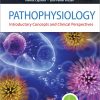

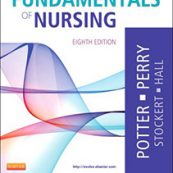
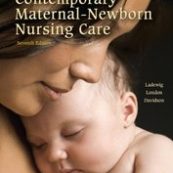
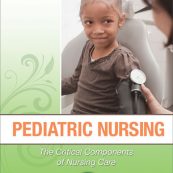
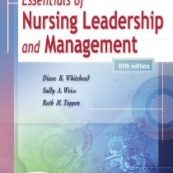
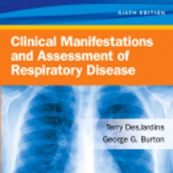
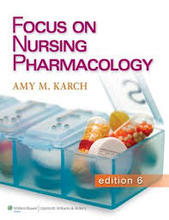
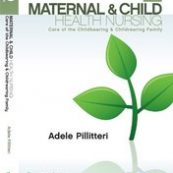
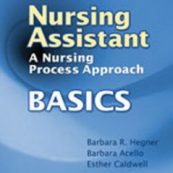
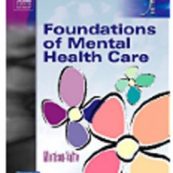
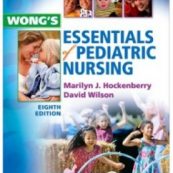
Reviews
There are no reviews yet.